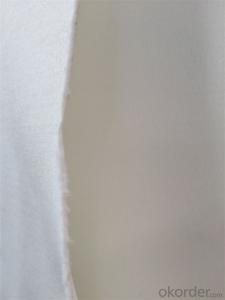The word coconut geotextile has been making rounds in the construction and environmental industries, which is an all-purpose textile made from the plentiful coconut fiber. But it’s more than just another fabric, but a sustainable alternative to various engineering problems. Let us delve into the realm of coconut geotextiles and get to know about their uses, advantages and how they are shaping modern construction.
The Origins of Coconut Geotextile
Coconut geotextiles are woven out of fibers obtained from cocounut husk. These fibers were once waste materials, but they have been turned into a material with remarkable strength and durability. To make them suitable for various purposes, coconuts have to be harvested, their fibers then extracted and finally weaved into a textile.
Sustainable and Eco-Friendly
Coconut geotextiles are attractive due to their sustainability. Coconuts as a renewable resource are abundant hence using fiber derived from them for geotextiles assists in reducing waste thus promoting circular economy. Additionally, these geo-textiles can decompose naturally when their lifespan comes to an end as compared to synthetic substances hence minimizing impact on environment.
Applications in Construction
Many road constructions also involve the use of coconut geotextiles for instance soil reinforcement against erosion among others. They are strong enough thus making them ideal for reinforcing soils as well as providing stability on structures. Crack prevention in roads during construction by reinforcing the base layer ensures longevity and smoother surface of such roads.
Erosion Control and Landscaping
In fruit farming or environmental projects; erosion control is another field where coconut geotextiles play essential roles in myriads of ways. It can therefore be used to prevent slopes from moving by supporting vegetation or retaining soil against washing away. In this way land remains intact while enhancing beauty of that place.
Agricultural Benefits
From farming operations through landscaping coconut geto textiles come in handy. Farmers can use them to control weed growth ensuring that only the crop that they want grows in their farms. Additionally, water distribution is regularized hence proper plant growth as a result of their utilization in drainage systems.
The Emotional Connection
I love coconut geotextiles because it represents a perfect balance between nature and human innovation. It is an example of how we are able to turn trashes into valuable things. What makes these materials even more special is that they have a functional role without harming our planet.
The Future of Coconut Geotextile
Moving forward, coconut geotextiles hold so much promise. People are becoming more environmentally conscious and as such there is a growing appetite for sustainable products. This will drive the increased adoption of coconut geotextiles which provide an eco-friendly alternative to traditional construction materials.
Embracing the Change
We need to start using coconut geotextiles in our large or small projects. These textiles for instance could be very helpful in cases such as yours where you require some support on your land because you desire uniformity throughout your farm.
Conclusion
In conclusion, coconut geotextiles are not just a matter of material; they represent the direction in which we want to go for a better sustainable future. With more knowledge accruing on their uses and advantages it is evident that coconut geotextiles are here for good. Let us further be creative in discovering other ways through which this amazing resource can be utilized, therefore safeguarding the earth’s inhabitants tomorrow.

